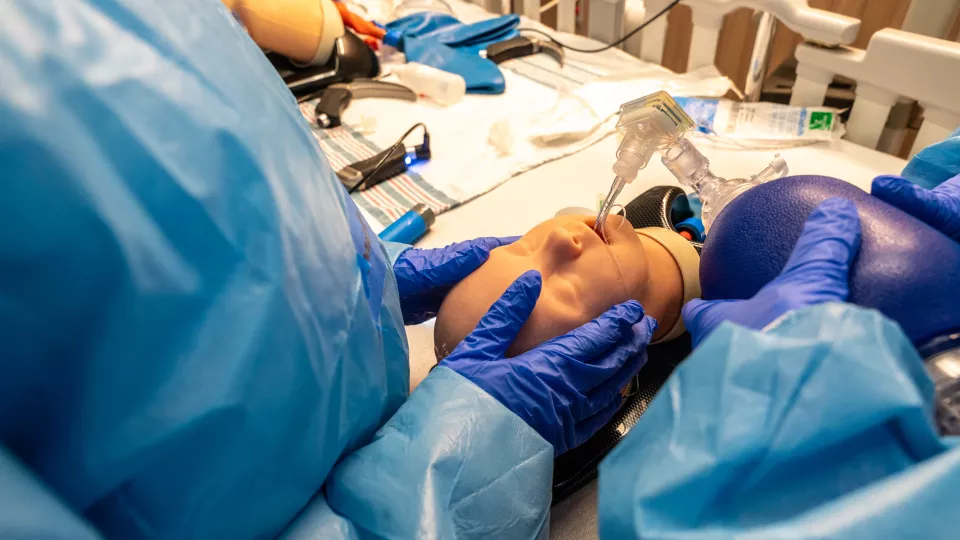Mannequins and Simulation Equipment
The Children’s Hospital Los Angeles Las Madrinas Simulation Center helps pediatric clinicians at all levels gain proficiency in standard and complex tasks. We maintain a full suite of mannequins and simulation equipment to accommodate participants’ needs. It’s part of our commitment to providing an optimal learning experience.
About Our Equipment and Program
Whether you’re a clinician in training seeking experience with basic responsibilities or part of an established team practicing a high-acuity scenario, CHLA can help. We are one of the region’s few simulation centers focused on pediatrics. Offerings include the best available equipment: high-fidelity mannequins with life-like features, basic task trainers and virtual reality technology.
Simulations occur in our state-of-the-art simulation facilities alongside experienced trainers and medical simulation experts. We offer standard courses, custom learning experiences and American Heart Association certifications.
Las Madrinas Simulation Center Learner Testimonial
“My participation in a recent simulation directly affected my ability to effectively, efficiently and safely manage a critically ill child's care. The simulation focused on numerous techniques for managing a tetralogy of Fallot exacerbation (Tet spell). It was beneficial to have practiced decision-making for this condition, including endotracheal intubation, before having an actual patient case.”
Pediatric mannequins
Mannequins support simulations for complex bedside procedures. We offer a broad range of options replicating newborns, babies and children. Some have extensive functionality supporting an interactive experience, while others are basic models of pediatric anatomy.
Offerings include:
Mid- and high-fidelity pediatric mannequins
High-fidelity pediatric mannequins are full-body simulator devices with software-driven, life-like features. These include eye movement and chests that rise and fall when breathing. Mid-fidelity mannequins are similar but offer fewer features.
These mannequins have dynamic features that enable learners to observe and respond to:
- Body temperature
- Changes in EKG readings
- Defibrillation
- Exhalation of carbon dioxide
- Pupil widening and narrowing
- Seizures
- Variations in Korotkoff (blood pressure) sounds

Low-fidelity trainers
Low-fidelity mannequins mimic a child’s anatomy but offer basic functionality. We use these devices to train participants on procedures such as:
- Colostomy
- Finger sticks
- Ileostomy
- Neck hyperextension
- Tracheostomy
- Urinary catch
- Umbilical catheterization

Pediatric task trainers

These devices replicate specific body areas and have anatomically precise features. They help learners practice targeted tasks, especially ones that require repetition to gain proficiency.
We use pediatric task trainers to help clinicians sharpen procedural skills such as:
- Airway management
- Cardiopulmonary resuscitation (CPR)
- Cannulation to initiate extracorporeal membrane oxygenation (ECMO)
- Intravenous line (IV) placement
- Intubation
- Nasogastric (NG) tube placement
- Venipuncture for blood draws
Virtual reality equipment
Our virtual reality equipment puts learners in hyper-realistic simulations with interactive patients, parents and care team members.
Special software, some of which our researchers helped develop, generates a clinical scenario. Learners point to medications, answer virtual team member questions, communicate with facilitators and perform procedures such as intubation. The software displays the participant’s experience on a screen and measures how quickly they move through care process milestones.

Contact Us
To learn more about our offerings or book a course, please call us at 323-361-4159 or email SimTeam@chla.usc.edu.


